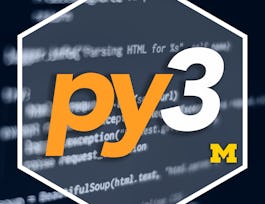Analyzing data with Python is an essential skill for Data Scientists and Data Analysts. This course will take you from the basics of data analysis with Python to building and evaluating data models.

Schenken Sie Ihrer Karriere Coursera Plus mit einem Rabatt von $160 , der jährlich abgerechnet wird. Sparen Sie heute.


Data Analysis with Python
Dieser Kurs ist Teil mehrerer Programme.

Dozent: Joseph Santarcangelo
484.795 bereits angemeldet
Bei  enthalten
enthalten
(18,518 Bewertungen)
Empfohlene Erfahrung
Was Sie lernen werden
Develop Python code for cleaning and preparing data for analysis - including handling missing values, formatting, normalizing, and binning data
Perform exploratory data analysis and apply analytical techniques to real-word datasets using libraries such as Pandas, Numpy and Scipy
Manipulate data using dataframes, summarize data, understand data distribution, perform correlation and create data pipelines
Build and evaluate regression models using machine learning scikit-learn library and use them for prediction and decision making
Kompetenzen, die Sie erwerben
- Kategorie: Model Selection
- Kategorie: Data Analysis
- Kategorie: Python Programming
- Kategorie: Data Visualization
- Kategorie: Predictive Modelling
Wichtige Details

Zu Ihrem LinkedIn-Profil hinzufügen
11 Aufgaben
Erfahren Sie, wie Mitarbeiter führender Unternehmen gefragte Kompetenzen erwerben.

Erweitern Sie Ihre Fachkenntnisse
- Lernen Sie neue Konzepte von Branchenexperten
- Gewinnen Sie ein Grundverständnis bestimmter Themen oder Tools
- Erwerben Sie berufsrelevante Kompetenzen durch praktische Projekte
- Erwerben Sie ein Berufszertifikat zur Vorlage


Erwerben Sie ein Karrierezertifikat.
Fügen Sie diese Qualifikation zur Ihrem LinkedIn-Profil oder Ihrem Lebenslauf hinzu.
Teilen Sie es in den sozialen Medien und in Ihrer Leistungsbeurteilung.

In diesem Kurs gibt es 6 Module
In this module, you will learn how to understand data and learn about how to use the libraries in Python to help you import data from multiple sources. You will then learn how to perform some basic tasks to start exploring and analyzing the imported data set.
Das ist alles enthalten
6 Videos1 Lektüre2 Aufgaben2 App-Elemente2 Plug-ins
In this module, you will learn how to perform some fundamental data wrangling tasks that, together, form the pre-processing phase of data analysis. These tasks include handling missing values in data, formatting data to standardize it and make it consistent, normalizing data, grouping data values into bins, and converting categorical variables into numerical quantitative variables.
Das ist alles enthalten
6 Videos1 Lektüre2 Aufgaben2 App-Elemente1 Plug-in
In this module, you will learn what is meant by exploratory data analysis, and you will learn how to perform computations on the data to calculate basic descriptive statistical information, such as mean, median, mode, and quartile values, and use that information to better understand the distribution of the data. You will learn about putting your data into groups to help you visualize the data better, you will learn how to use the Pearson correlation method to compare two continuous numerical variables, and you will learn how to use the Chi-square test to find the association between two categorical variables and how to interpret them.
Das ist alles enthalten
5 Videos1 Lektüre2 Aufgaben2 App-Elemente3 Plug-ins
In this module, you will learn how to define the explanatory variable and the response variable and understand the differences between the simple linear regression and multiple linear regression models. You will learn how to evaluate a model using visualization and learn about polynomial regression and pipelines. You will also learn how to interpret and use the R-squared and the mean square error measures to perform in-sample evaluations to numerically evaluate our model. And lastly, you will learn about prediction and decision making when determining if our model is correct.
Das ist alles enthalten
6 Videos1 Lektüre2 Aufgaben2 App-Elemente1 Plug-in
In this module, you will learn about the importance of model evaluation and discuss different data model refinement techniques. You will learn about model selection and how to identify overfitting and underfitting in a predictive model. You will also learn about using Ridge Regression to regularize and reduce standard errors to prevent overfitting a regression model and how to use the Grid Search method to tune the hyperparameters of an estimator.
Das ist alles enthalten
4 Videos1 Lektüre2 Aufgaben2 App-Elemente2 Plug-ins
Congratulations! You have now completed all the modules for this course. In this last module, you will complete the final assignment that will be graded by your peers. In this final assignment, you will assume the role of a Data Analyst working at a real estate investment trust organization who wants to start investing in residential real estate. You will be given a dataset containing detailed information about house prices in the region based on a number of property features, and it will be your job to analyze and predict the market price of houses given that information.
Das ist alles enthalten
5 Lektüren1 Aufgabe1 peer review2 App-Elemente1 Plug-in
Dozent

von
Empfohlen, wenn Sie sich für Data Analysis interessieren

The Hong Kong University of Science and Technology

University of Michigan

Università di Napoli Federico II

University of Colorado Boulder
Warum entscheiden sich Menschen für Coursera für ihre Karriere?




Bewertungen von Lernenden
Zeigt 3 von 18518
18.518 Bewertungen
- 5 stars
76,12 %
- 4 stars
18,49 %
- 3 stars
3,68 %
- 2 stars
0,92 %
- 1 star
0,77 %
Geprüft am 16. Apr. 2023
Geprüft am 9. März 2020
Geprüft am 7. Nov. 2020

Neue Karrieremöglichkeiten mit Coursera Plus
Unbegrenzter Zugang zu über 7.000 erstklassigen Kursen, praktischen Projekten und Zertifikatsprogrammen, die Sie auf den Beruf vorbereiten – alles in Ihrem Abonnement enthalten
Bringen Sie Ihre Karriere mit einem Online-Abschluss voran.
Erwerben Sie einen Abschluss von erstklassigen Universitäten – 100 % online
Schließen Sie sich mehr als 3.400 Unternehmen in aller Welt an, die sich für Coursera for Business entschieden haben.
Schulen Sie Ihre Mitarbeiter*innen, um sich in der digitalen Wirtschaft zu behaupten.
Häufig gestellte Fragen
Access to lectures and assignments depends on your type of enrollment. If you take a course in audit mode, you will be able to see most course materials for free. To access graded assignments and to earn a Certificate, you will need to purchase the Certificate experience, during or after your audit. If you don't see the audit option:
The course may not offer an audit option. You can try a Free Trial instead, or apply for Financial Aid.
The course may offer 'Full Course, No Certificate' instead. This option lets you see all course materials, submit required assessments, and get a final grade. This also means that you will not be able to purchase a Certificate experience.
When you enroll in the course, you get access to all of the courses in the Certificate, and you earn a certificate when you complete the work. Your electronic Certificate will be added to your Accomplishments page - from there, you can print your Certificate or add it to your LinkedIn profile. If you only want to read and view the course content, you can audit the course for free.
If you subscribed, you get a 7-day free trial during which you can cancel at no penalty. After that, we don’t give refunds, but you can cancel your subscription at any time. See our full refund policy.

